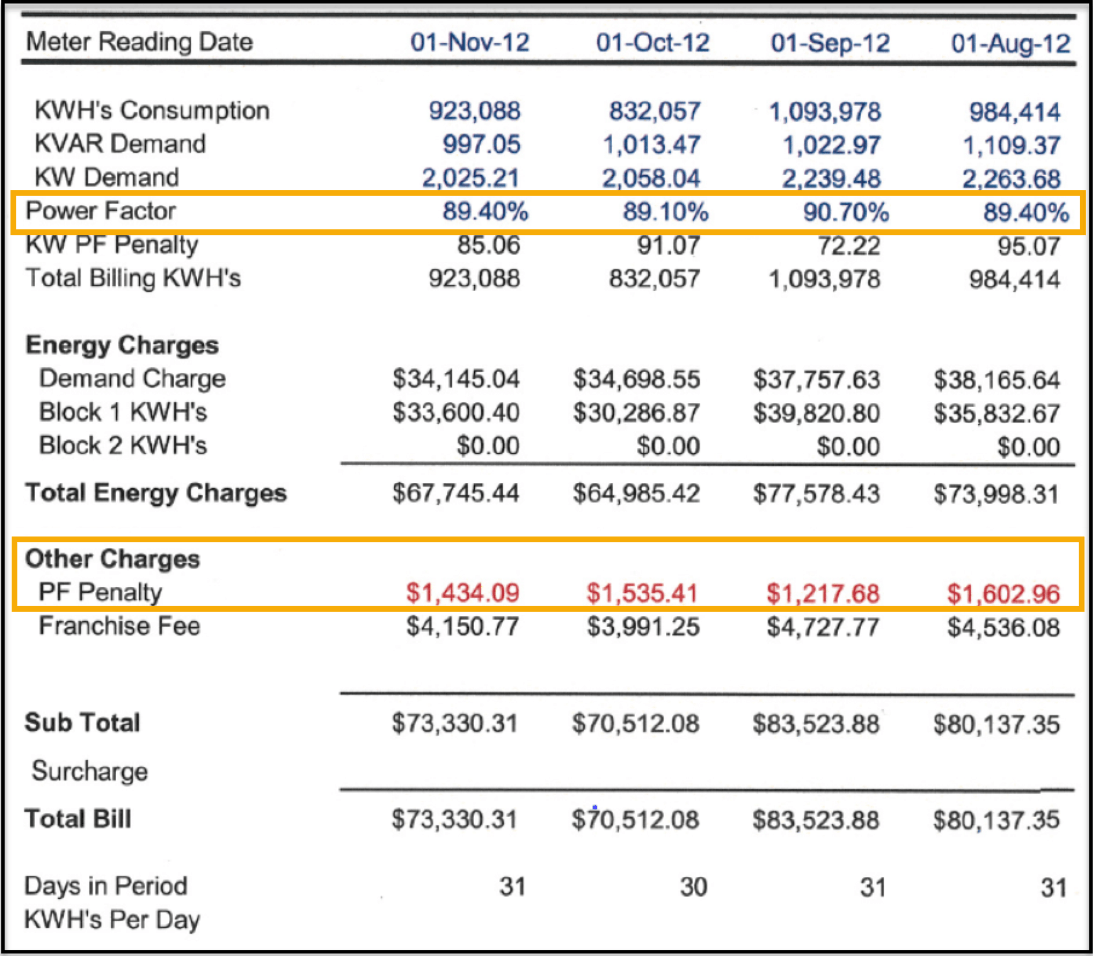Power Factor Correction
Inductive loads such as motors, heating equipment, generators, transformers, and high-intensity discharge lighting produce an electrical lag commonly referred to as inductance. This inductance causes a phase difference between current and voltage.
Consequently, there are times when current and voltage have different signs, and negative energy is generated and fed back into the power supply network. When the current and voltage regain same sign, a similar amount of energy is required to generate the magnetic fields. The energy that is lost due to magnetic reversals in inductive loads is commonly referred to as reactive power, or wasted energy since it is not used in performing useful work.
KVAR is Reactive Power
It is the power required by inductive loads to produce the magnetizing flux. Reactive power, measured in vars, does not actually do work.
KW is Working Power
It is the power, measured in watts, that actually performs useful work, like making a motor rotate or illuminating a fixture.
KVA is Apparent Power
It is the geometric sum of KVAR and KW. This is what the utility company is supplying.
Power Factor is the ratio of KW (Working Power) to KVA (Apparent Power)
Power factor is a measure of the efficiency with which electrical loads convert electrical power into useful work. High power factors (usually above 95%) are an indicator that the electrical loads are utilizing power efficiently.
Power Factor Correction is the process of minimizing reactive power and enhancing the efficiency with which inductive loads consume AC power.
Improving the Power Factor can maximize current-carrying capacity, improve voltage to equipment, reduce power losses, and lower electric bills.
Consider a facility with a power factor of 70%. Of the total current supplied to this location, only 70% is actually doing work. The remaining 30% is non-working, or reactive power, but this amount of power must be provided by the utility and paid for by the end-user.
Such a facility is consuming more power than should be needed to perform its tasks. Consequently, the utility has to increase its generation and transmission capacity in order to accommodate this extra demand. In return, the utility charges the user a Power Factor Penalty for this inefficiency.


